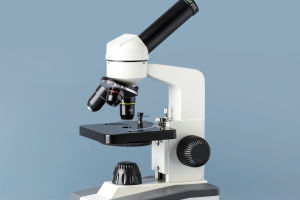The stethoscope is an essential diagnostic tool in the medical field, and its role cannot be underestimated.
Its invention enables doctors to listen directly to the sounds within a patient's body, allowing for more accurate diagnosis of various diseases.
The basic structure of a stethoscope includes earplugs, tubes, and a chest piece, through which doctors can capture subtle sounds from inside the body, such as heartbeats, breathing, and blood flow.
Despite its seemingly simple appearance, the stethoscope performs a wide range of functions and can detect a variety of health issues.
First and foremost, the stethoscope is most commonly used to listen to heart sounds. As a crucial organ of the human body, the heart’s beating pattern can reveal much about a person’s health. Doctors typically place the stethoscope on the patient’s chest and listen closely to the heartbeat through the earplugs.
Under normal circumstances, the heartbeat is clear and rhythmic. However, if there is an issue with the heart, the stethoscope can detect abnormal heart sounds, such as murmurs or irregular beats. These abnormal sounds may indicate conditions such as valvular heart disease, cardiomyopathy, or even heart failure.
Murmurs, for example, are often caused by abnormal blood flow within the heart, which may be due to valvular stenosis or insufficiency. Through the stethoscope, these issues can be detected early, allowing for timely intervention.
In addition to heart sounds, the stethoscope is also used to listen to lung sounds. By placing the chest piece on the patient’s back or chest, the doctor can hear the sound of air flowing through the trachea and lungs during breathing.
Normal lung sounds are crisp and steady, but if there is a problem with the lungs, the stethoscope may detect abnormal sounds such as rales, wheezing, or moist rales. These sounds can indicate respiratory diseases like pneumonia, bronchitis, asthma, or pulmonary edema.
In particular, in cases of lung infection or inflammation, the stethoscope helps doctors determine the location and extent of the lesion, enabling them to develop a more effective treatment plan.
The stethoscope is also widely used for abdominal auscultation. The abdomen is a critical part of the digestive system, and doctors can listen to bowel sounds through the stethoscope. These sounds are produced by the movement of gas and fluid within the intestines and are typically regular and soft.
If bowel sounds are too strong, too weak, or completely absent, it could indicate conditions such as intestinal obstruction, peritonitis, or intestinal paralysis. In such cases, the use of a stethoscope can help doctors detect and manage digestive system emergencies early.
Beyond heart, lung, and bowel sounds, the stethoscope is also employed in vascular auscultation. Doctors use the stethoscope to listen to the sound of blood flow in arteries, helping to identify issues like stenosis or aneurysms in blood vessels.
Normally, blood flow in the arteries is smooth, but if abnormal vortex sounds are detected, it could signal problems such as arteriosclerosis or thrombosis. For patients with hypertension, the stethoscope is also used to check for complications in the heart or blood vessels, guiding targeted treatment.
In some situations, the stethoscope can even assist in diagnosing joint and bone problems. For example, when examining conditions like arthritis or fractures, doctors can hear the sound of joint friction or bone movement through the stethoscope. Although this application is relatively rare, it still holds diagnostic value in specific cases.
As a non-invasive diagnostic tool, the stethoscope offers the advantage of quickly and conveniently capturing abnormal sounds within the patient's body. This capability provides an important basis for the early detection and treatment of diseases.
Although modern medical technology has developed many sophisticated diagnostic devices, the stethoscope remains one of the indispensable tools for doctors in everyday practice. It not only holds a vital place in traditional medicine but also continues to play a significant role in modern medicine.
Despite its simple design, the stethoscope is extensively used in medical diagnosis. It serves as a "listening key" in the hands of doctors, unlocking the health code within the body.
This humble instrument has been and continues to be, an essential companion to healthcare professionals, helping them to understand and diagnose the inner workings of the human body with remarkable precision.


